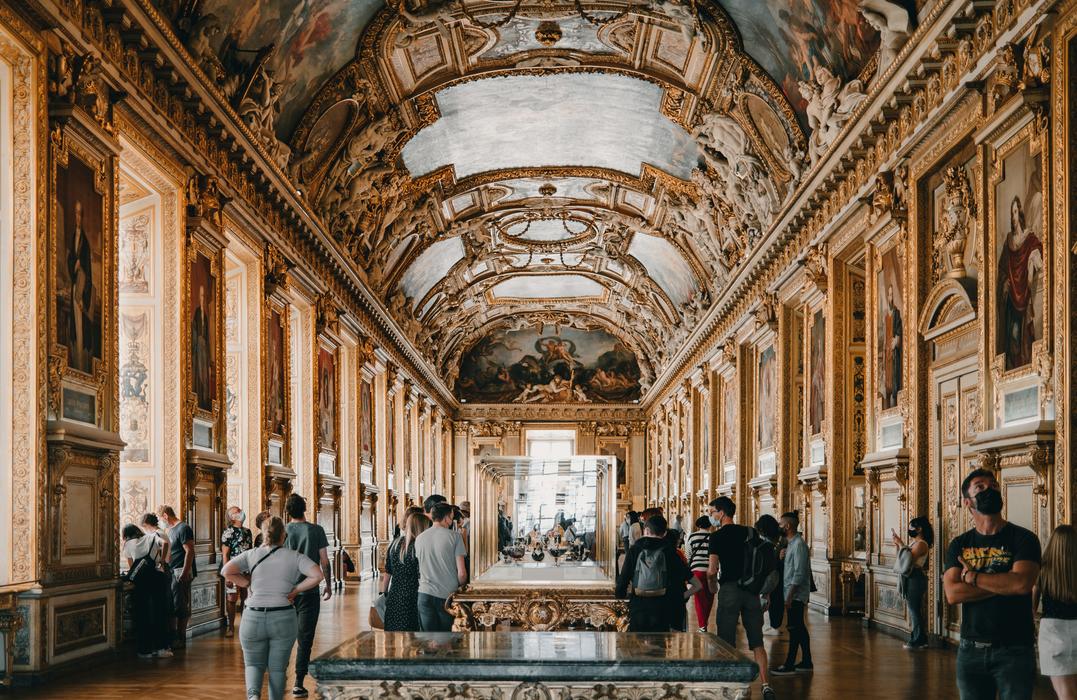Hidden Gems in the Louvre: Discover Artistic Treasures Beyond the Mona Lisa
The Louvre is more than just the home of the Mona Lisa. While Leonardo da Vinci's masterpiece draws millions of art enthusiasts each year, numerous hidden gems in the Louvre often go unnoticed. These lesser-known masterpieces are steeped in history, culture, and intrigue, providing art lovers with a rich tapestry of stories and artistic brilliance to explore. In this article, we'll take you on a journey through some of the hidden gems in the Louvre that deserve your attention.
The Louvre: A Brief Overview
Before we delve into the lesser-known pieces, it's essential to understand what makes the Louvre such a monumental institution. Located in Paris, France, the Louvre is one of the largest and most visited art museums in the world, housing over 380,000 objects that span thousands of years of history. The museum's diverse collections range from ancient civilizations to the 19th century, making it an essential destination for art lovers.
The Importance of Discovering Hidden Gems in the Louvre
Exploring hidden gems in the Louvre allows visitors to experience art from unique perspectives. These lesser-known pieces can offer fresh insights into artistic techniques, historical contexts, and cultural significance that overshadow the more famous works. By venturing off the beaten path, you may uncover stories and narratives that expand your understanding of art history.
Top Hidden Gems in the Louvre
The Winged Victory of Samothrace
One of the most breathtaking hidden gems in the Louvre is the Winged Victory of Samothrace, or Nike of Samothrace. This ancient Greek statue, created around 190 BC, represents the goddess of victory and is celebrated for its dynamic composition and sensuous drapery. The sculpture’s strategic placement at the top of the Daru staircase provides a dramatic entrance, where it greets visitors as they ascend. Its lifelike details and sense of movement exemplify the mastery of Hellenistic art.
The Code of Hammurabi
Another lesser-known treasure is the Code of Hammurabi, one of the oldest deciphered writings of significant length in the world. Dating back to 1754 BC in ancient Babylon, this stele features cuneiform inscriptions detailing laws and decrees. It offers fascinating insight into early legal systems and societal norms, making it an invaluable piece of human history. Visitors often overlook this masterpiece, yet it holds profound importance in understanding the evolution of governance and justice.
The Red Room (Le Salon Rouge)
For a unique experience, visit the Red Room, or Le Salon Rouge. This lesser-known area of the Louvre features several works by French artists, including pieces by Jacques-Louis David and Eugène Delacroix. The vibrant red décor and intimate setting allow for a personal encounter with artwork that speaks volumes about the French Romantic movement. It's a perfect spot for visitors seeking a quiet moment of reflection away from the bustling crowds.
Exploring Lesser-Known Artists
Jean-Auguste-Dominique Ingres’ "La Grande Odalisque"
While Ingres might not be a stranger to museum-goers, his painting "La Grande Odalisque" often gets lost in the grandeur of the Louvre’s collections. This striking work, painted in 1814, showcases Ingres' mastery of form and color, representing a reclining woman in a sumptuous setting. The painting challenges traditional representations of women in art, promoting dialogues about beauty, sensuality, and gaze.
Giovanni Battista Tiepolo’s "The Finding of Moses"
Giovanni Battista Tiepolo’s "The Finding of Moses" is another captivating piece in the Louvre's collection that often escapes the eyes of visitors. Created in 1750, this engaging scene captures the moment of the infant Moses being discovered among the reeds by Pharaoh's daughter. The vivid colors and dynamic composition make for an intriguing representation of Baroque art that showcases Tiepolo's remarkable flair for storytelling through visual means.
The Historical Context of Lesser-Known Works
Unveiling hidden gems in the Louvre provides not only a visual treat but also a historical context that enriches the experience. Some lesser-known artworks represent pivotal moments in art history or cultural shifts.
Amédéo Modigliani's Portraits
Modigliani's work, although not as universally recognized as the Mona Lisa, offers a fresh perspective on modern art. His portraits, characterized by elongated forms and emotional depth, invite reflections on identity and expression. Pieces like "Portrait of a Young Woman" are easily overshadowed by more popular pieces but embody Modigliani's unique interpretation of form and emotional vulnerability.
The Pastel Portraits of Élisabeth Louise Vigée Le Brun
A true pioneer among female artists, Élisabeth Louise Vigée Le Brun often gets overshadowed by her male contemporaries. Her pastel portraits exude a vibrant energy, and her ability to capture her subjects’ personalities and emotions is unrivaled. Works like "Self-Portrait in a Straw Hat" offer insight into her life and the challenges faced by women artists during the 18th century.
Notable Sculptures to Discover
The Venus de Milo
While the Venus de Milo is a well-known statue, many visitors miss the intricate details of this classical masterpiece. The unknown origins and the missing arms of the sculpture provoke curiosity about its historical context and symbolism. Observing the statue closely reveals the artist’s mastery in depicting the human form and the grace that classical art embodies.
Michelangelo's Slaves
Another stunning yet often overlooked set of sculptures is Michelangelo's Slaves. Created between 1513 and 1534, these unfinished works were intended for the tomb of Pope Julius II. The raw, emotional quality of the figures—struggling to break free from the marble—evokes a powerful sense of tension and beauty. Their presence in the Louvre invites contemplation about creation, struggle, and the artist’s intentions.
How to Make the Most of Your Visit
Visiting the Louvre to discover hidden gems requires a thoughtful approach. Here are some tips to enhance your experience:
Plan Ahead
Before your visit, research lesser-known pieces and create a personalized itinerary that includes these hidden gems in the Louvre. Familiarize yourself with the museum's layout, as it can be overwhelming due to its size.
Take a Guided Tour
To ensure you don’t miss out on these treasures, consider booking a guided tour that focuses on lesser-known masterpieces. An art historian or expert will provide fascinating insights that deepen your appreciation of the works.
Embrace the Experience
Allow time for reflection and don’t rush through the museum. Engage with the artwork, ask questions, and take notes if something piques your interest. Enjoy the ambient beauty of the Louvre and immerse yourself in the stories each piece conveys.
Conclusion
Exploring the hidden gems in the Louvre opens up a world of artistic treasures that often go unnoticed. By delving into lesser-known masterpieces, visitors can gain a deeper appreciation for the diverse history and cultural narratives that the museum encapsulates. Whether it’s a powerful sculpture, a captivating painting, or a historical artifact, the Louvre is teeming with stories waiting to be uncovered.
FAQ Section
What are some hidden gems in the Louvre?
Some hidden gems in the Louvre include the Winged Victory of Samothrace, the Code of Hammurabi, and Jean-Auguste-Dominique Ingres’ "La Grande Odalisque." These works, among others, showcase the richness of the museum’s collection beyond well-known attractions.
How can I find hidden gems in the Louvre during my visit?
To discover hidden gems in the Louvre, consider researching lesser-known works beforehand, taking a guided tour focused on lesser-known pieces, and spending time in specific galleries that are less frequented by tourists.
Are there famous artists who created hidden gems in the Louvre?
Yes, artists like Élisabeth Louise Vigée Le Brun and Amedeo Modigliani have created works housed in the Louvre that may not be as widely recognized but are equally significant and fascinating.
Why should I look for hidden gems in the Louvre instead of just visiting famous artworks?
Exploring hidden gems in the Louvre allows you to understand art history from a broader perspective. These pieces often have unique stories, cultural significance, and artistic techniques that provide deeper insights than more famous works.
What’s the best way to appreciate hidden gems in the Louvre?
To appreciate hidden gems in the Louvre, take your time with each piece, engage with the stories behind them, and allow for reflection. Use a guidebook or app to learn about the significance of lesser-known works and enrich your experience.
For more information on planning your visit to the Louvre, you can visit the official website Louvre Museum.



